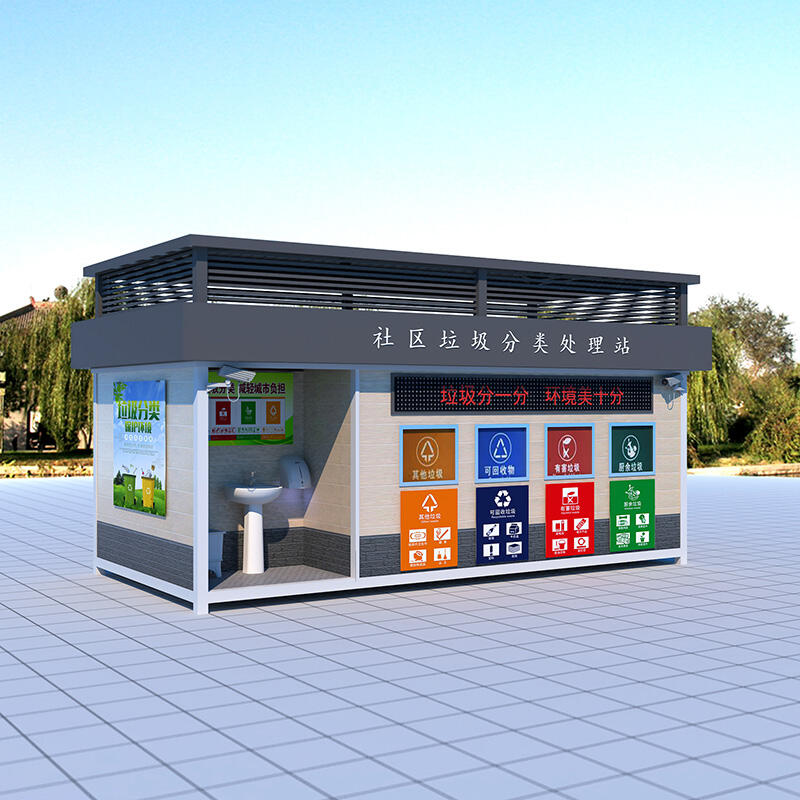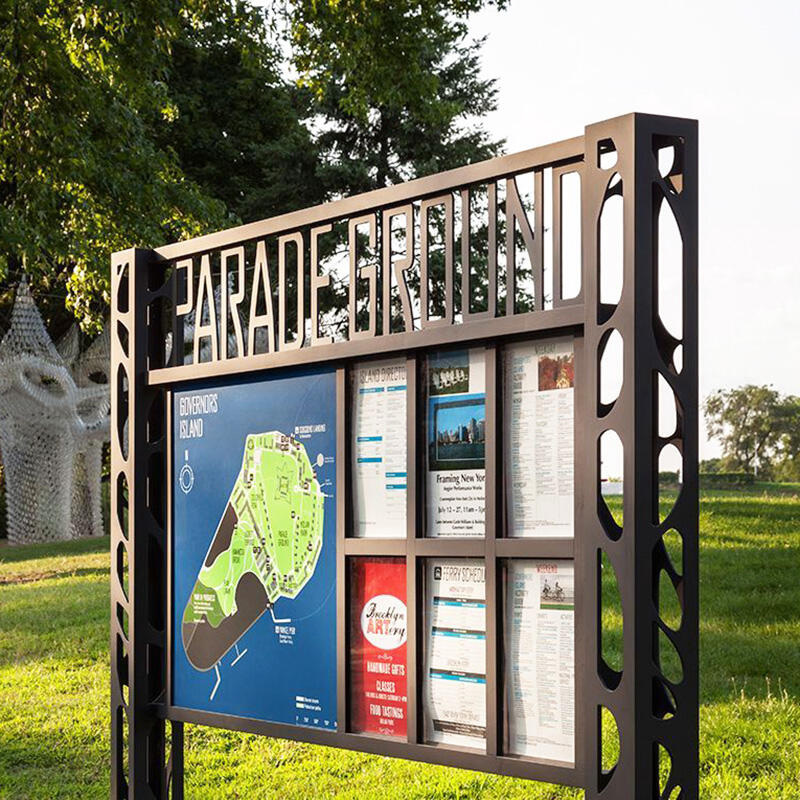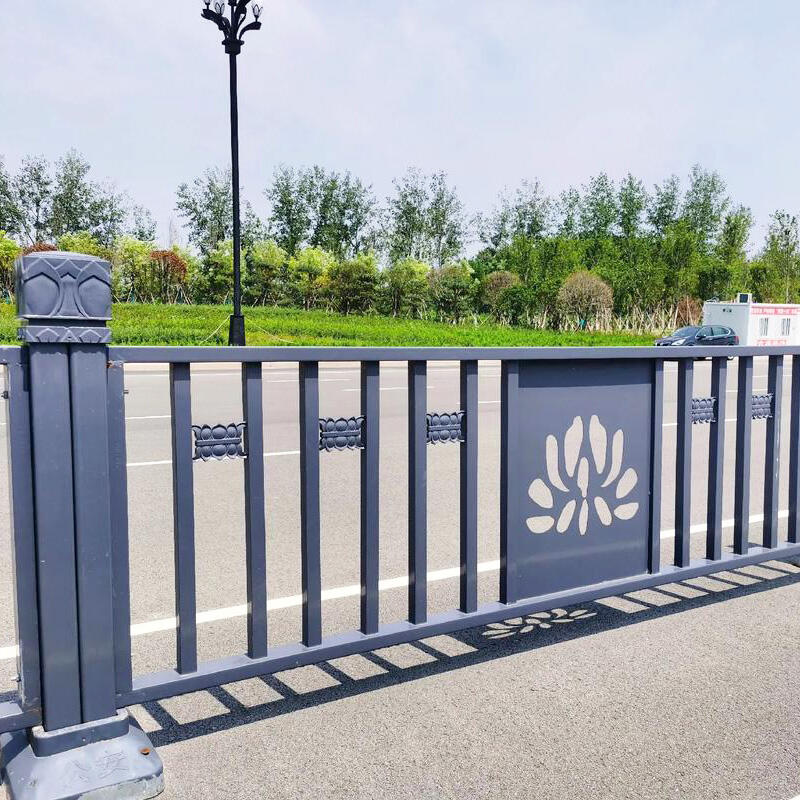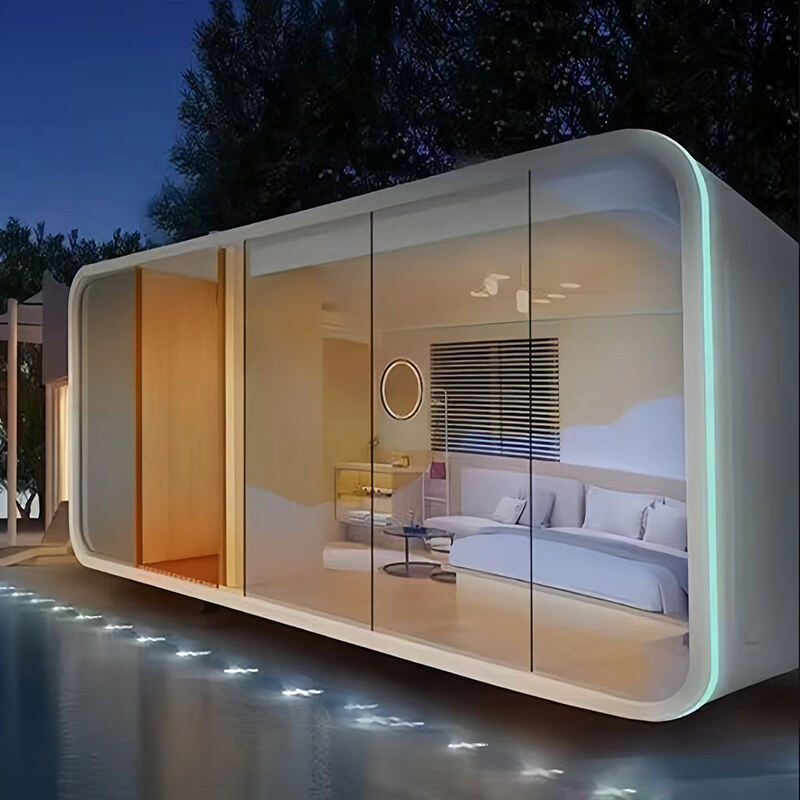Роль указателей в парках в экологическом обучении
Соединение природы и знаний через визуальное повествование
Визуальное повествование в парках используется для передачи экологических историй посредством графики, изображений и краткого текста, что улучшает понимание посетителями. Исследования показывают, что вовлекающий визуальный контент может повысить запоминаемость информации на 65% (Источник: Исследование, опубликованное в Журнале образовательной психологии). Это делает визуальное повествование ключевым элементом для обучающих стендов в парках, помогая сократить разрыв между посетителями и природой. Указатели, включающие информацию о местном биоразнообразии, персонализируют процесс обучения, делая его актуальным и значимым для посетителей, что приводит к более глубокому восхищению окружающей средой и формированию чувства ответственности. Такие подходы могут эффективно соединять людей с природой, превращая обычный визит в парк в значимое образовательное приключение.
Интерактивные элементы в обучающих стендах
Интерактивные элементы в указателях парка, такие как QR-коды и сенсорные экраны, поощряют практическое обучение, делая образовательный опыт более увлекательным и запоминающимся. Эти функции создают многоуровневый обучающий процесс, предоставляя дополнительные ресурсы и информацию. Исследования показали, что взаимодействие может значительно повысить уровень вовлеченности посетителей, при этом некоторые парки сообщают о росте использования таких дисплеев на 50% (Источник: Исследование, опубликованное в Журнале экологического образования). Включение в дисплеи игровых викторин или заданий еще больше привлекает посетителей к обучению в процессе получения удовольствия. Такие интерактивные элементы не только обогащают体验 посетителей, но и способствуют экологическому образованию динамичным и значимым образом.
Повышение вовлеченности посетителей с помощью экологических фактов
Информационные указатели в парке могут повысить заинтересованность посетителей, демонстрируя удивительные или малоизвестные экологические факты, которые пробуждают любопытство и стимулируют дальнейшее обучение. Адаптация информации для разнообразной аудитории с использованием различных информационных стилей может улучшить вовлеченность, что подтверждается отзывами посетителей и экологическими опросами. Интеграция с социальными сетями, например, хэштеги, связанные с образовательными фактами, может расширить охват и влияние сообщений на месте. Объяснение практических последствий экологических фактов позволяет сделать информацию более релевантной, побуждая посетителей становиться сторонниками экологического мышления. Стратегическое использование экологической информации является мощным инструментом для развития экологического сознания и вдохновения к действию среди посетителей парка.
Принципы дизайна эффективного экологического информирования
Сбалансирование эстетики и информационной ценности
Создание эффективных экологических указателей включает в себя сочетание эстетической привлекательности с информационной ценностью для позитивного влияния на восприятие посетителей. Указатели должны гармонично вписываться в окружающую природную среду, привлекая внимание через ясность и краткость. Отзывы экологических дизайнеров показывают, что привлекательные визуально указатели значительно повышают читаемость и понимание. Стратегический выбор шрифтов, цветов и изображений еще больше вовлекает зрителей, делая образовательный опыт как привлекательным, так и информативным. Применение принципов гармоничного дизайна не только улучшает визуальную привлекательность, но и гарантирует, что ключевая информация передается кратко, делая ее доступной и запоминающейся для посетителей.
Прочность в открытых пространствах: материалы имеют значение
Продолжительность службы наружной информационной символики в значительной степени зависит от используемых материалов. Выбор погодоустойчивых материалов является критически важным, особенно в условиях переменчивого климата. Недавние исследования подчеркивают необходимость использования переработанных материалов при создании знаков, так как это значительно снижает экологический след и соответствует целям устойчивого развития. Прочная символика уменьшает частоту и стоимость замены, сохраняя ресурсы и финансирование для парков и образовательных учреждений. Кроме того, внедрение антивандальных функций может защитить целостность знаков, дополнительно увеличивая их срок службы и обеспечивая устойчивость к возможным повреждениям.
Функции доступности для разнообразной аудитории
Внедрение функций доступности в образовательных указателях является ключевым для поощрения включения в общественные пространства. Использование брайля, аудиоописаний и двуязычного текста делает информацию доступной для всех, включая людей с ограниченными возможностями. Соблюдение руководящих принципов Закона об американцах с ограниченными возможностями (ADA) гарантирует, что указатели предоставляют равный доступ для различных демографических групп. Статистика участия показывает, что парки с включающими указателями отмечают увеличение посещений разнообразными аудиториями. Кроме того, использование иллюстраций и символов может преодолеть языковые барьеры, делая образовательный контент более универсальным. Этот подход не только усиливает включение, но и обогащает опыт посетителей, предоставляя различные возможности обучения.
Интеграция указателей с общественными объектами
Согласование указателей с павильонами и зонами отдыха
Согласование информационных знаков с павильонами и зонами отдыха играет ключевую роль в улучшении опыта посетителей. Стратегическое размещение этих знаков рядом с местами отдыха позволяет посетителям удобно взаимодействовать с образовательным контентом во время перерывов. Эти места отдыха могут выступать как мини-образовательные центры, предоставляя локальные экологические знания через тщательно размещенные указатели. Эффективная координация обеспечивает бесшовное путешествие для посетителей, сочетая навигационные подсказки с информативным контентом, который обогащает их понимание окружающей среды. Фактически, данные показывают, что общественные учреждения, оснащенные образовательными ресурсами, демонстрируют на 30% большую вовлеченность посетителей, что подтверждает ценность интеграции информативных указателей в общественные пространства.
Системы навигации как образовательные инструменты
Системы навигации служат инструментами двойного назначения в природных условиях, направляя посетителей, одновременно предоставляя образовательную ценность. Эти системы часто включают карты, которые подчеркивают экологические особенности, тем самым предоставляя контекст и обогащая опыт посетителей. Такая информированная навигация не только снижает раздражение, но и повышает удовлетворенность, с исследованиями, указывающими на улучшение удовлетворенности посетителей до 40%. Кроме того, указатели, детализирующие интересные места вдоль троп, поощряют исследование и способствуют более глубокому пониманию окружающей среды. Таким образом, системы навигации не только помогают в ориентировании, но и способствуют образовательной миссии общественных пространств.
Экраны остановок автобусов: Переходы от города к природе
Остановки общественного транспорта могут превращаться в образовательные платформы, эффективно соединяя городскую жизнь с природными средами. Внедрение информационных экранов подчеркивает экологическое образование еще до того, как посетители добираются до своих пунктов назначения. Такая урбанистическая сигнализация может повысить осведомленность о близлежащих природных зонах более чем на 25%, стимулируя увеличение посещений и исследований. Эти переходы также предоставляют возможности для участия сообщества, где местные художники могут внести свой вклад в эстетическую и образовательную ценность указателей, способствуя чувству гордости за общину и совместной ответственности за экологическое образование. Этот подход не только улучшает опыт посетителей, но и усиливает связи внутри сообщества.
Кейсы: Успешные кампании экологического образования
Успех интерпретации на тропах национального парка
Тропы в национальных парках служат идеальной платформой для продвижения экологического осознания через информационные указатели. Исследования показывают, что информационные знаки вдоль троп значительно усиливают взаимодействие посетителей с природными окрестностями, что приводит к увеличению образовательной активности на 60%. Стратегическое размещение образовательных указателей вдоль троп позволило паркам успешно расширить понимание посетителями экологических систем. Кроме того, интегративные методы, сочетающие физические указатели с обзорными экскурсиями и цифровым контентом, еще больше усиливают образовательное воздействие. Эти усилия предоставляют надежную модель для других парков, стремящихся улучшить свои образовательные предложения.
Сообщения о сохранении дикой природы в защищенных территориях
Сообщения о сохранении дикой природы в охраняемых территориях значительно увеличили видимость и поддержку со стороны посетителей консервационных инициатив. Исследования показывают замечательный рост на 70% в поддержке благодаря эффективным сообщениям, вызывающим эмоциональный отклик. Щиты, рассказывающие истории об исчезающих видах, побуждают посетителей активно участвовать в усилиях по сохранению природы. Включение местных успехов помогает создать чувство гордости и ответственности в сообществе. Данные из охраняемых территорий демонстрируют значительную корреляцию между образовательными сообщениями и позитивными изменениями в поведении посетителей, что подчеркивает влияние целевых сообщений о дикой природе.
Общественно-ориентированное информирование для местных экосистем
Участие сообщества в проектах по созданию указателей играет ключевую роль в усилении экологического образования и формировании связи с местными экосистемами. Вовлечение членов сообщества в процесс создания и обратной связи по указателям показало увеличение их актуальности и использования на 40%. Кампании, использующие истории из местных источников, вдохновляют посетителей становиться защитниками своей природной среды. Реализация указателей, разработанных сообществом, способствует поддержанию интереса посетителей и более глубокому пониманию региональных экологических проблем, что оказывается полезным в долгосрочных усилиях по защите окружающей среды.
Будущие тенденции в области наружного образовательного знака
Интеграция дополненной реальности в информационные стенды парков
Расширенная реальность (AR) трансформирует взаимодействие посетителей с наружными образовательными указателями, позволяя в реальном времени взаимодействовать с окружающей средой. AR предлагает погружающиеся опыты, которые повышают усвоение образовательной информации, при этом исследования показывают до 75%-го увеличения запоминания информации. Этот впечатляющий результат подчеркивает потенциальные преимущества инвестиций в технологии расширенной реальности. По мере развития этих технологий, интеграция AR с традиционными указателями обещает преобразить наружное обучение, давая посетителям возможность визуализировать данные и симуляции, углубляющие их понимание экологических процессов.
Устойчивые материалы для экологичного производства
В производстве указателей все чаще отдается предпочтение устойчивым материалам, что соответствует усилиям по минимизации воздействия на окружающую среду. Использование переработанных или вторичных материалов может значительно снизить углеродный след указателя, что подтверждается экологическими исследованиями. Парки, внедряющие экологически чистые практики, могут улучшить свой имидж, привлекая экологически сознательных посетителей, которые ценят такие усилия. Интеграция устойчивого развития в дизайн позволяет не только информировать посетителей о сохранении природы, но и активно вовлекать их в принципы охраны природы, тем самым усиливая экологическую повестку.
Обновление контента на основе данных обратной связи посетителей
Обновления контента на основе отзывов посетителей обеспечивают актуальность наружной рекламы и отражение современных экологических знаний. Этот подход использует методы сбора данных, такие как опросы, цифровые комментарии и аналитика взаимодействия, для оценки эффективности указателей. Исследования показывают, что парки, использующие обновления на основе данных, отмечают на 20% больше повторных визитов, что демонстрирует, как обратная связь может повысить интерес посетителей. Этот participatory-подход не только улучшает образовательные результаты, но и способствует формированию чувства связи с сообществом среди посетителей, поощряя к повторному участию и попечительству.










